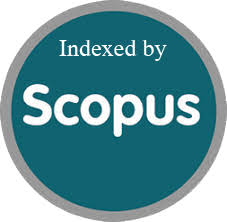Studying the Global Climate Changes using Artificial Intelligence: An Overview
Abstract
Artificial intelligence (AI) can be a powerful tool in addressing some of humanity's biggest challenges named global climate change. Monitoring climate change involves large and ever-evolving data sets. In order to track changes in climatic conditions in real time, address vulnerabilities to reduce them, and provide essential opportunities for humanity to find solutions that can have a positive impact on our planet more quickly, artificial intelligence systems can assist in the analysis of sets of environmental data. Even though AI is only one tool in the difficult analysis of the factors causing climate change, its capacity to handle vast amounts of data, find patterns, and occasionally anticipate data affords us the chance to better comprehend the ecosystem
References
- A. Creti, P. Delacote, and A. Leblois, Introduction: special issue on weather and climate impacts in developing countries, Environ. Dev. Econ., vol. 26, no. 56, pp. 429431, 2021.
- A. Jahani and M. Saffariha, Human activities impact prediction in vegetation diversity of Lar National Park in Iran using artificial neural network model, Integr. Environ. Assess. Manag., vol. 17, no. 1, pp. 4252, 2021.
- A. K. Singh et al., An integrated statistical-machine learning approach for runoff prediction, Sustainability, vol. 14, no. 13, p. 8209, 2022.
- A. M. Abdullah, R. S. A. Usmani, T. R. Pillai, M. Marjani, and I. A. T. Hashem, An optimized artificial neural network model using genetic algorithm for prediction of traffic emission concentrations, Int. J. Adv. Comput. Sci. Appl, vol. 12, pp. 794803, 2021.
- A. Mikhaylov, N. Moiseev, K. Aleshin, and T. Burkhardt, Global climate change and greenhouse effect, Entrep. Sustain. Issues, vol. 7, no. 4, p. 2897, 2020.
- B. M. Yahya and D. Z. Seker, Designing weather forecasting model using computational intelligence tools, Appl. Artif. Intell., vol. 33, no. 2, pp. 137151, 2019.
- B. M. Yahya, D. Z. Seker, and B. Y. Hameed, Integrated Artificial Intelligent with RS and GIS for Long-Term Drought Prediction, in IOP Conference Series: Materials Science and Engineering, 2021, vol. 1152, no. 1, p. 12024.
- B. M. Yahya, F. S. Yahya, and R. G. Thannoun, COVID-19 prediction analysis using artificial intelligence procedures and GIS spatial analyst: a case study for Iraq, Appl. Geomatics, vol. 13, pp. 481491, 2021.
- B. Moneer, D. Z. Seker, and K. A. Ahmed, Drought Monitoring Based on Predicted SPI Using Fuzzy Controller System, Iraqi Natl. J. Earth Sci., vol. 22, no. 2, pp. 140152, 2022.
- B. S. N. Reddy, S. K. Pramada, and T. Roshni, Monthly surface runoff prediction using artificial intelligence: a study from a tropical climate river basin, J. Earth Syst. Sci., vol. 130, pp. 115, 2021.
- C. E. Richards, R. C. Lupton, and J. M. Allwood, Re-framing the threat of global warming: an empirical causal loop diagram of climate change, food insecurity and societal collapse, Clim. Change, vol. 164, no. 34, p. 49, 2021.
- D. Schrholz, S. Kubler, and A. Zaslavsky, Artificial intelligence-enabled context-aware air quality prediction for smart cities, J. Clean. Prod., vol. 271, p. 121941, 2020.
- D. Xu, Q. Zhang, Y. Ding, and D. Zhang, Application of a hybrid ARIMA-LSTM model based on the SPEI for drought forecasting, Environ. Sci. Pollut. Res., vol. 29, no. 3, pp. 41284144, 2022.
- E. B. Berndt et al., A machine learning approach to objective identification of dust in satellite imagery, Earth Sp. Sci., vol. 8, no. 6, p. e2021EA001788, 2021.
- E. Shahi, S. Karimi, and H. R. Jafari, Monitoring and modeling land use/cover changes in Arasbaran protected Area using and integrated Markov chain and artificial neural network, Model. Earth Syst. Environ., vol. 6, pp. 19011911, 2020.
- G. Bonire and A. Gbenga-Ilori, Towards artificial intelligence-based reduction of greenhouse gas emissions in the telecommunications industry, Sci. African, vol. 12, p. e00823, 2021.
- G. Lohmann, M. Butzin, N. Eissner, X. Shi, and C. Stepanek, Abrupt climate and weather changes across time scales, Paleoceanogr. Paleoclimatology, vol. 35, no. 9, p. e2019PA003782, 2020.
- H. A. M. Thanoon and K. A. Ahmed, Hydrological Information Extraction for Dams Site Selection using Remote Sensing Techniques and Geographical Information System., Al-Rafadain Eng. J., vol. 21, no. 5, 2013.
- H. Chen, Y.-P. Xu, R. S. V Teegavarapu, Y. Guo, and J. Xie, Assessing different roles of baseflow and surface runoff for long-term streamflow forecasting in southeastern China, Hydrol. Sci. J., vol. 66, no. 16, pp. 23122329, 2021.
- I. Yoosefdoost, A. Khashei-Siuki, H. Tabari, and O. Mohammadrezapour, Runoff simulation under future climate change conditions: Performance comparison of data-mining algorithms and conceptual models, Water Resour. Manag., vol. 36, no. 4, pp. 11911215, 2022.
- K. C. A. Khanzode and R. D. Sarode, Advantages and disadvantages of artificial intelligence and machine learning: A literature review, Int. J. Libr. Inf. Sci., vol. 9, no. 1, p. 3, 2020.
- K. Nam et al., A proactive energy-efficient optimal ventilation system using artificial intelligent techniques under outdoor air quality conditions, Appl. Energy, vol. 266, p. 114893, 2020.
- M. Alizamir, S. Kim, M. Zounemat-Kermani, S. Heddam, A. H. Shahrabadi, and B. Gharabaghi, Modelling daily soil temperature by hydro-meteorological data at different depths using a novel data-intelligence model: deep echo state network model, Artif. Intell. Rev., vol. 54, pp. 28632890, 2021.
- M. Amiri, S. O. Soleimani, and F. Soltani Tafreshi, Dust Detection Using MODIS Satellite Images Using An Artificial Neural Network, Iran. J. Remote Sens. GIS, vol. 12, no. 1, pp. 3754, 2020.
- M. Boroughani et al., Application of remote sensing techniques and machine learning algorithms in dust source detection and dust source susceptibility mapping, Ecol. Inform., vol. 56, p. 101059, 2020.
- M. M. Alsalmany, R. G. Thannoun, and A. T. Shehab, Determining the impact of climatic elements on vegetation cover based on remote sensing data-(Al-Hamdaniya district as a case study), Iraqi Natl. J. Earth Sci., vol. 23, no. 1, pp. 1325, 2023.
- N. Saranya and A. Mythili, Classification of soil and crop suggestion using machine learning techniques, Int. J. Eng. Res. Technol., vol. 9, no. 02, pp. 671673, 2020.
- O. NELLES, NONLINEAR SYSTEM IDENTIFICATION: From Classical Approaches to Neural Networks, Fuzzy Systems,... and Gaussian Processes. SPRINGER NATURE, 2020.
- O. Rahmati et al., Hybridized neural fuzzy ensembles for dust source modeling and prediction, Atmos. Environ., vol. 224, p. 117320, 2020.
- O. Z. Jasim, N. H. Hamed, and M. A. Abid, Urban air quality assessment using integrated artificial intelligence algorithms and geographic information system modeling in a highly congested area, Iraq, J. Southwest Jiaotong Univ., vol. 55, no. 1, 2020.
- P. Bai, X. Liu, and J. Xie, Simulating runoff under changing climatic conditions: a comparison of the long short-term memory network with two conceptual hydrologic models, J. Hydrol., vol. 592, p. 125779, 2021.
- R. Cioffi, M. Travaglioni, G. Piscitelli, A. Petrillo, and F. De Felice, Artificial intelligence and machine learning applications in smart production: Progress, trends, and directions, Sustainability, vol. 12, no. 2, p. 492, 2020.
- R. K. Singh, V. S. P. Sinha, P. K. Joshi, and M. Kumar, Modelling Agriculture, Forestry and Other Land Use (AFOLU) in response to climate change scenarios for the SAARC nations, Environ. Monit. Assess., vol. 192, pp. 118, 2020.
- R. Nishant, M. Kennedy, and J. Corbett, Artificial intelligence for sustainability: Challenges, opportunities, and a research agenda, Int. J. Inf. Manage., vol. 53, p. 102104, 2020.
- R. Qassab Bashi, A. W. M. Y. Al Gazzak, and O. Mahmood Agha, Forecasting the Reconnaissance Drought Index (RDI) Using Artificial Neural Networks (ANNs), Al-Rafidain Eng. J., vol. 27, no. 2, pp. 140155, 2022.
- S. H. Ali, Using of GIS Software for Mapping the Climatic Data Obtained from Internet Network: Iraq Case Study, Iraqi Natl. J. Earth Sci., vol. 18, no. 2, pp. 3548, 2018.
- S. I. Zandalinas, F. B. Fritschi, and R. Mittler, Global warming, climate change, and environmental pollution: recipe for a multifactorial stress combination disaster, Trends Plant Sci., vol. 26, no. 6, pp. 588599, 2021.
- S. L. Zubaidi et al., A method for predicting long-term municipal water demands under climate change, Water Resour. Manag., vol. 34, pp. 12651279, 2020.
- S. M. Qasim, A. M. Youns, and O. M. Mahmood-Agha, Testing of the Homogeneity of Precipitation Time Series in Selected Regions of Iraq, Al-Rafidain Eng. J., vol. 25, no. 1, pp. 126137, 2020.
- S. Momeneh, Performance comparison of artificial intelligence models with IHACRES model in streamflow modeling of the Gamasiab River catchment, Water Soil Manag. Model., vol. 2, no. 3, pp. 116, 2022.
- S. Subramaniam et al., Artificial Intelligence technologies for forecasting air pollution and human health: a narrative review, Sustainability, vol. 14, no. 16, p. 9951, 2022.
- S. Wang, H. Peng, Q. Hu, and M. Jiang, Analysis of runoff generation driving factors based on hydrological model and interpretable machine learning method, J. Hydrol. Reg. Stud., vol. 42, p. 101139, 2022.
- V. Nourani, E. Foroumandi, E. Sharghi, and D. Dbrowska, Ecological-environmental quality estimation using remote sensing and combined artificial intelligence techniques, J. Hydroinformatics, vol. 23, no. 1, pp. 4765, 2021.
- W. M. Ridwan, M. Sapitang, A. Aziz, K. F. Kushiar, A. N. Ahmed, and A. El-Shafie, Rainfall forecasting model using machine learning methods: Case study Terengganu, Malaysia, Ain Shams Eng. J., vol. 12, no. 2, pp. 16511663, 2021.
- X. Xiang, Q. Li, S. Khan, and O. I. Khalaf, Urban water resource management for sustainable environment planning using artificial intelligence techniques, Environ. Impact Assess. Rev., vol. 86, p. 106515, 2021.
- Y. Tang, J. Kurths, W. Lin, E. Ott, and L. Kocarev, Introduction to focus issue: When machine learning meets complex systems: Networks, chaos, and nonlinear dynamics, Chaos An Interdiscip. J. Nonlinear Sci., vol. 30, no. 6, 2020.
- Z. Ebrahimi-Khusfi, R. Taghizadeh-Mehrjardi, and M. Mirakbari, Evaluation of machine learning models for predicting the temporal variations of dust storm index in arid regions of Iran, Atmos. Pollut. Res., vol. 12, no. 1, pp. 134147, 2021.
- Z. Mosaffaei, A. Jahani, M. A. Z. Chahouki, H. Goshtasb, V. Etemad, and M. Saffariha, Soil texture and plant degradation predictive model (STPDPM) in national parks using artificial neural network (ANN), Model. Earth Syst. Environ., vol. 6, pp. 715729, 2020.








